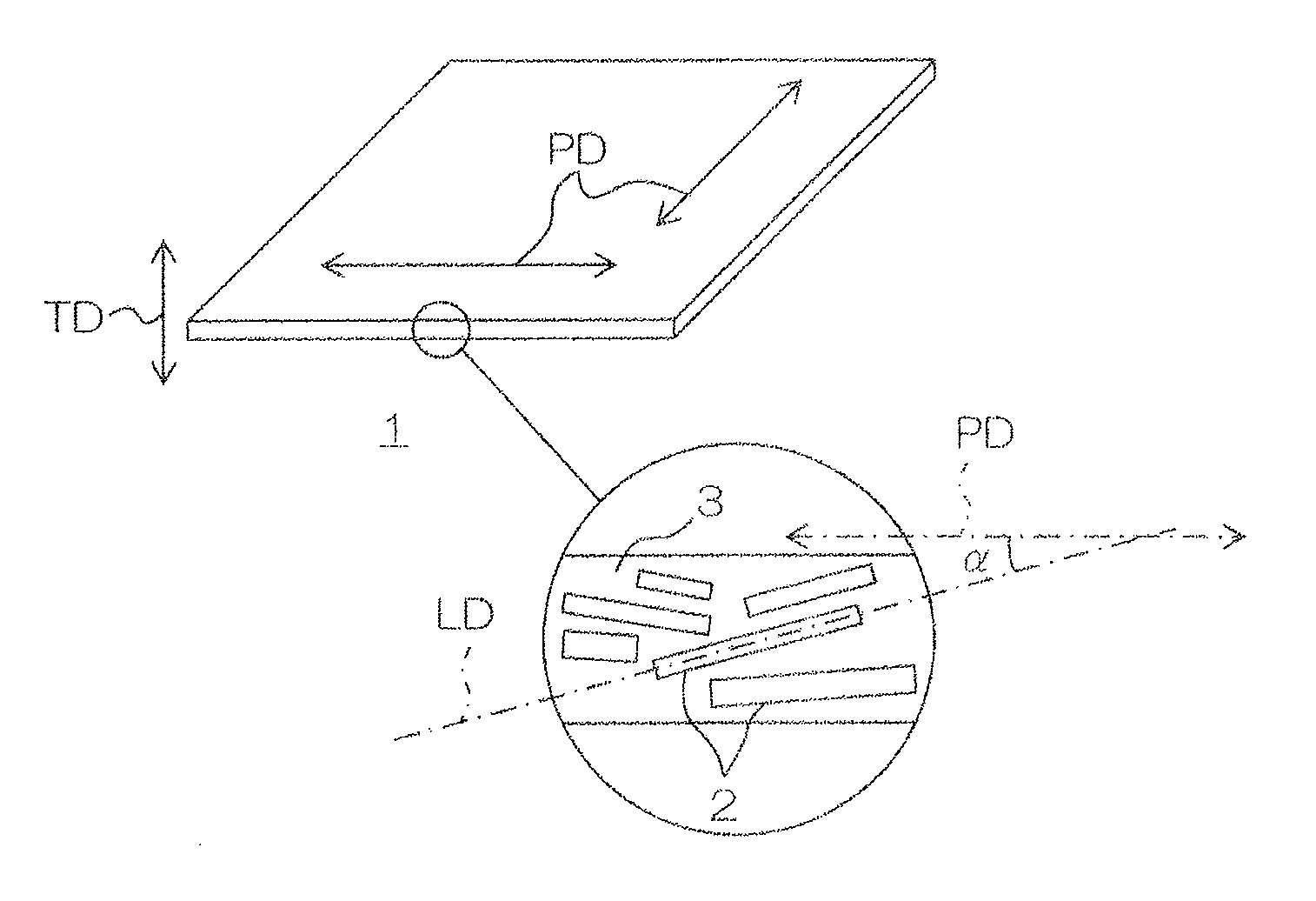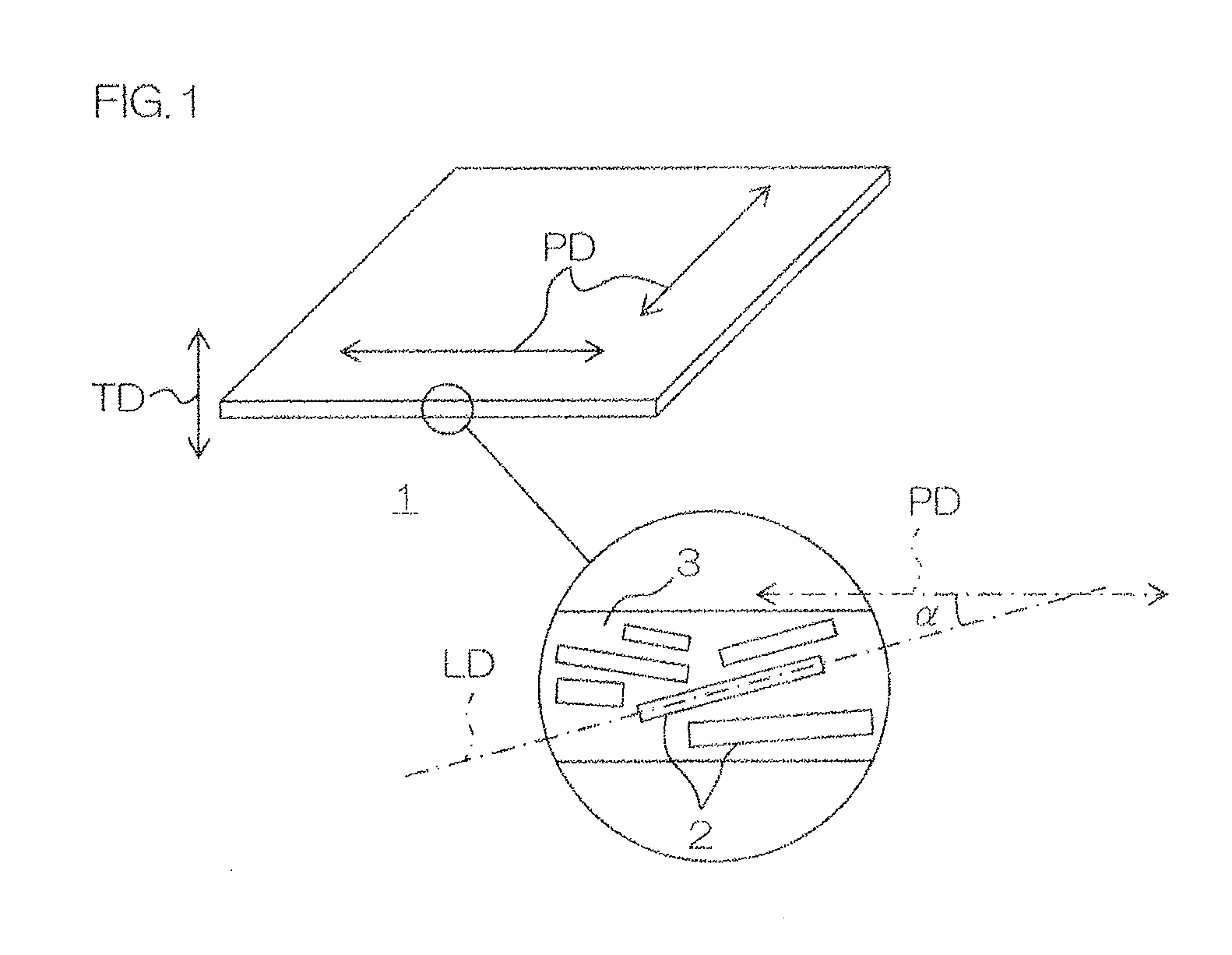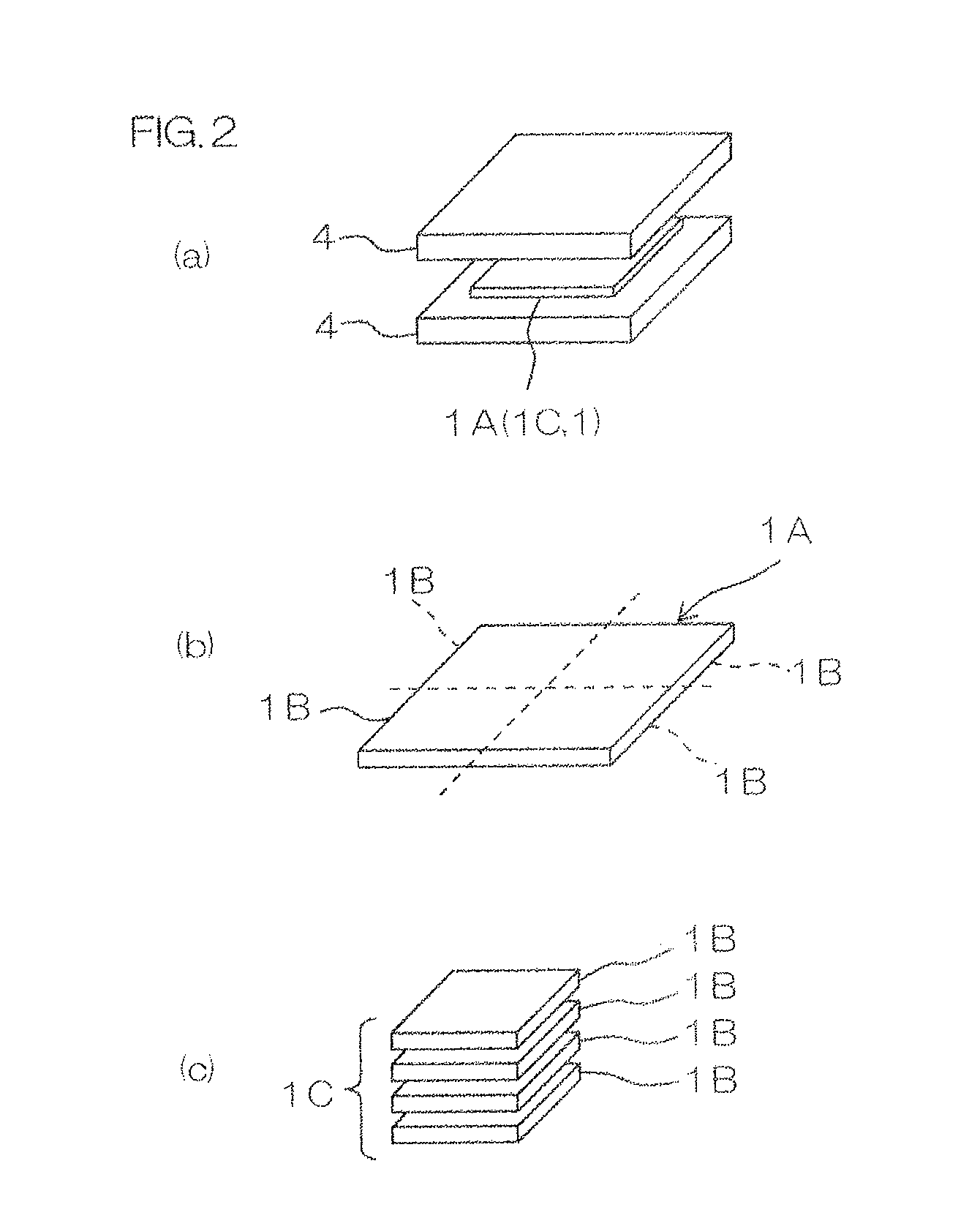Thermal conductive sheet
- Summary
- Abstract
- Description
- Claims
- Application Information
AI Technical Summary
Benefits of technology
Problems solved by technology
Method used
Image
Examples
example
[0186]While the present invention will be described hereinafter in further detail with reference to Examples and Comparative Examples, the present invention is not limited to these Examples and Comparative Examples.
examples 1 to 6
[0187]In conformity with the mixing formulation of Tables 1 and 2, boron nitride particles, an epoxy resin composition, and a solvent were blended to be stirred and the obtained mixture was allowed to stand at room temperature (at 23° C.) for one night. Thus, methyl ethyl ketone (the solvent) was allowed to volatilize, so that a thermal conductive composition in a solid state at normal temperature was prepared.
[0188]Next, the obtained thermal conductive composition was sandwiched by two releasing films which were subjected to a silicone treatment to be hot pressed with a vacuum hot press machine at 80° C. under an atmosphere (a vacuum atmosphere) of 10 Pa with a load of 5 tons (20 MPa) for two minutes, so that a pressed sheet having a thickness of 0.3 mm was obtained (ref: FIG. 2(a)).
[0189]Thereafter, the obtained pressed sheet was cut so as to be divided into a plurality of pieces when projected in the thickness direction of the pressed sheet, so that divided sheets were obtained (...
examples 7 to 9
[0194]In conformity with the mixing formulation of Table 2, boron nitride particles, an epoxy resin composition, an additive, and a solvent were blended to be stirred, so that a varnish was prepared.
[0195]Next, the varnish was applied to a substrate with an applicator with a gap described in Table 2 to be then allowed to stand at room temperature (at 23° C.) for one night. Thus, methyl ethyl ketone (the solvent) was allowed to volatilize, so that a sheet having a thickness of 200 μm was fabricated.
[0196]Thereafter, the obtained sheet was cut so as to be divided into a plurality of pieces when projected in the thickness direction of the sheet, so that divided sheets were obtained (ref: FIG. 2(b)). Subsequently, the divided sheets were laminated in the thickness direction, so that a laminated sheet was obtained (ref: FIG. 2(c)).
[0197]Subsequently, the obtained laminated sheet was hot pressed under the same conditions as those described above with the same vacuum hot press machine as t...
PUM
| Property | Measurement | Unit |
|---|---|---|
| Thermal conductivity | aaaaa | aaaaa |
| Thickness | aaaaa | aaaaa |
| Molecular weight | aaaaa | aaaaa |
Abstract
Description
Claims
Application Information
 Login to View More
Login to View More - R&D
- Intellectual Property
- Life Sciences
- Materials
- Tech Scout
- Unparalleled Data Quality
- Higher Quality Content
- 60% Fewer Hallucinations
Browse by: Latest US Patents, China's latest patents, Technical Efficacy Thesaurus, Application Domain, Technology Topic, Popular Technical Reports.
© 2025 PatSnap. All rights reserved.Legal|Privacy policy|Modern Slavery Act Transparency Statement|Sitemap|About US| Contact US: help@patsnap.com



